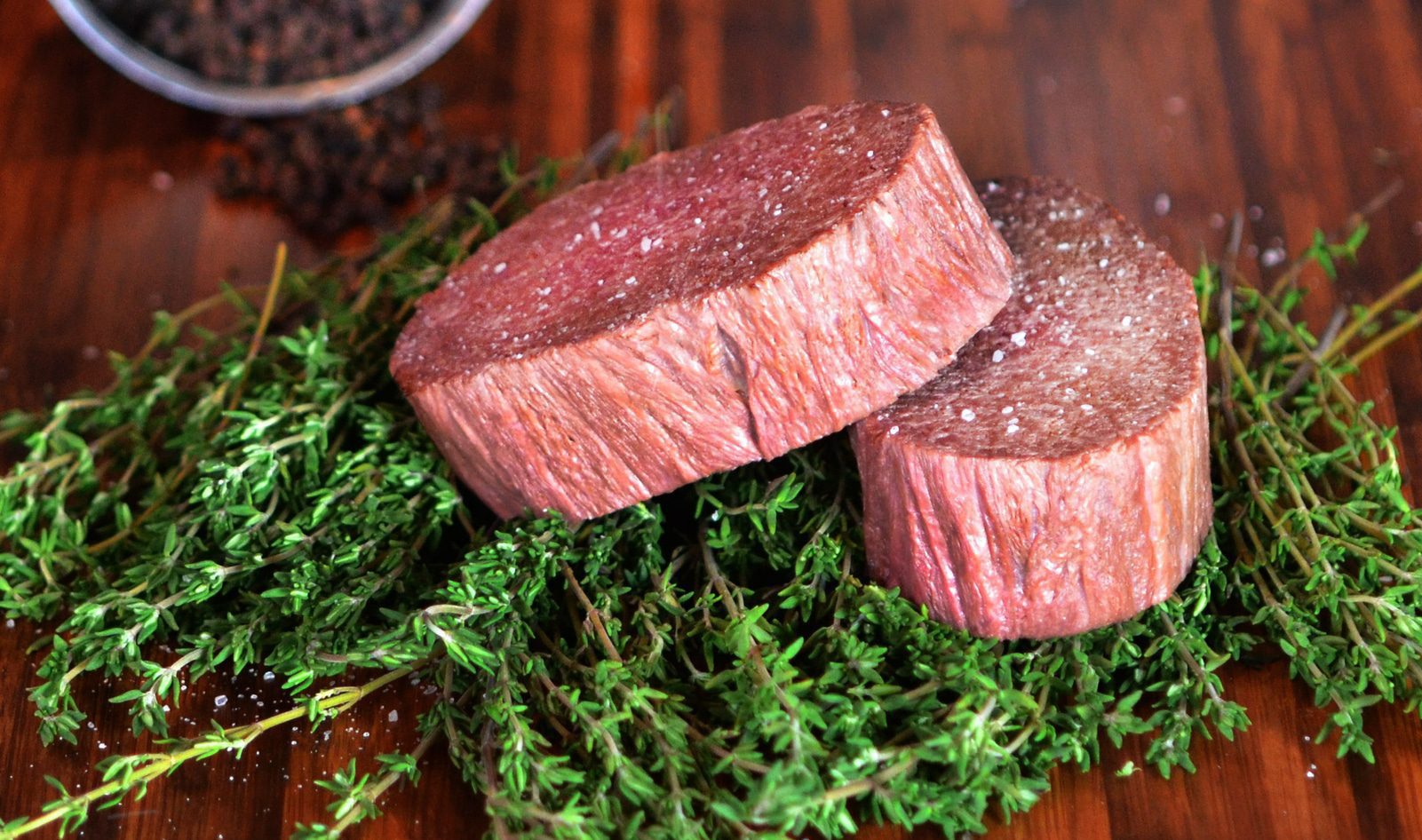Alternatives to meat and dairy products are getting more sophisticated—and, in turn, creating more demand from consumers.
Being a vegan at the summer barbeque has never been easier. Plant-based alternatives to meats and cheeses have gotten more sophisticated and plentiful, drawing in the flexitarian crowd, which wants to reduce its meat consumption but certainly has little interest in compromising the taste and texture of their favorite burger or hot dog. For vegans and vegetarians, having a wide variety of quality meat and dairy alternatives makes their shopping experience more equitable and creates less friction in families with mixed eating habits.
For many, reducing or eliminating their meat consumption is one way they can contribute positively to the environment. New product development in the alternative meat and dairy space has really helped consumers make an easier commitment.
“Using our food system to address the world’s climate issues is an extraordinary and untapped opportunity for positive, consumer-driven change,” says Laura Kilman, director of new product development at Impossible Foods (Redwood City, CA). “Replacing animals as a food source has the potential to reverse the trajectory of global warming; halt the extermination of nature, wildlife, and the ecosystems that keep earth viable; preserve precious resources like fresh water, and eliminate a massive threat to public health. Without any changes to our energy or transportation habits, eliminating animal agriculture in the next 25 years would offset 68% of the greenhouse gas emissions from the entire rest of the economy and give us a 30-year pause in the rise of greenhouse gasses.”
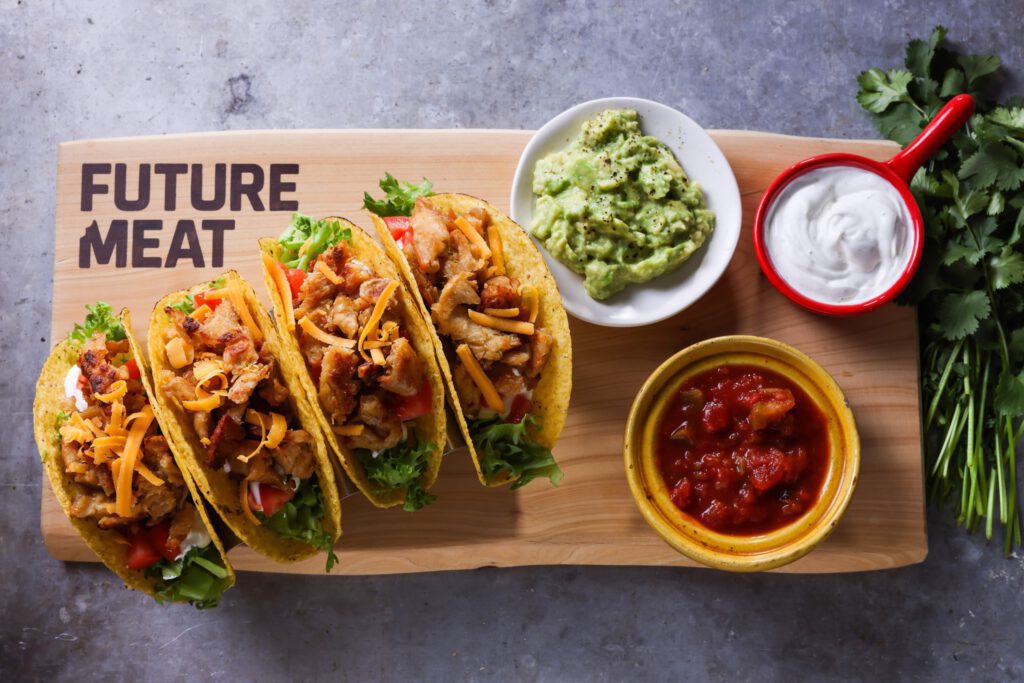
Replacing animal agriculture may be a longshot in some people’s minds, but based on the sales figures, consumers are interested in plant-based alternatives to meat and dairy. Aggressive innovation in this space will only make these more viable as a food source. According to the Plant-Based Foods Association—citing figures from market researcher SPINS on the 52-week, 104-week, 156-week, and 208-week period ending December 26, 2021—over the last three years, plant-based meat has seen 74% dollar growth. Currently, sales are at a steady $1.4 billion, which is flat compared to the previous year, but continues to maintain its position, accounting for 2.7% of retail packaged-meat dollar sales, or 1.4% of the total meat category. In the natural channel, the plant-based share of the meat category is 14%.
When it comes to household penetration, plant-based meat is at 19%. Despite steady sales, the category continues to change, diversifying and improving. While plant-based burgers remain popular, sales of plant-based meatballs grew 12% in 2021; sales of plant-based chicken varieties such as nuggets, tenders, and cutlets grew 9%; and sales of plant-based deli slices grew 8%. One of the biggest growth areas is plant-based seafood, whose sales grew 14% to $14 million in 2021 (although the category still only accounts for 1% of the entire plant-based meat category). The plant-based dairy category reached $2.1 billion in sales in 2021. Within the category, plant-based cheese sales grew by 7% while animal-based cheese sales fell 2%.
Clearly, the rewards of entering this burgeoning food space can be great, but it is not without its challenges. While in the past, vegans and vegetarians were willing to compromise on taste and texture in their commitment to an animal-free diet, the flexitarian is less likely to do so, and the new vegans and vegetarians have so much more to choose from.

“People don’t want to sacrifice the foods they love for unsatisfying alternatives,” says Kilman. “We’ve known this for a long time: When consumers are offered products that don’t taste as good, they’re not going to eat them just because they’re better for the planet.”
On top of plant-based foods, advancement in cell culture technology is making it possible for scientists to grow meat in the lab, potentially eliminating the need to slaughter animals entirely. The future is bright when it comes to meat and dairy alternatives. Here’s what you need to know to succeed in this category.
Plant-Based Meatiness
What may have started as a novelty is now an expectation as more consumers get to enjoy their favorite foods without the baggage of animal agriculture or having to compromise much in the way of taste and texture. Plant-based meats have certainly come a long way, and manufacturers continue to hone and perfect their techniques to properly replicate animal-based staples.
But one should also strive to elevate the experience.
“Consumers are looking for plant-based options that closely resemble the products that they are familiar with, but are also increasingly looking for a combination of taste and texture that creates a unique and new sensory experience,” says Olaf Kohnke, senior technical service manager for soups, sauces, and dressings at Tate & Lyle (London).
When someone is tasting a plant-based burger, for example, they want their expectations met, even exceeded. What they look for are specific qualities in taste and texture that are hallmarks of that familiar meatiness they are hoping for. A recent report based on a 2022 survey conducted by Kerry (Tralee, Ireland) on 1,500 consumers across the U.S., UK, Australia, and Brazil found that 79% of U.S. consumers said they were likely to buy an authentic chargrilled-tasting plant-based burger, 73% of U.S. consumers were likely to buy an authentic meat-tasting burger based on description alone, and 80% of U.S. consumers were likely to buy a plant-based burger described as rich and savory.
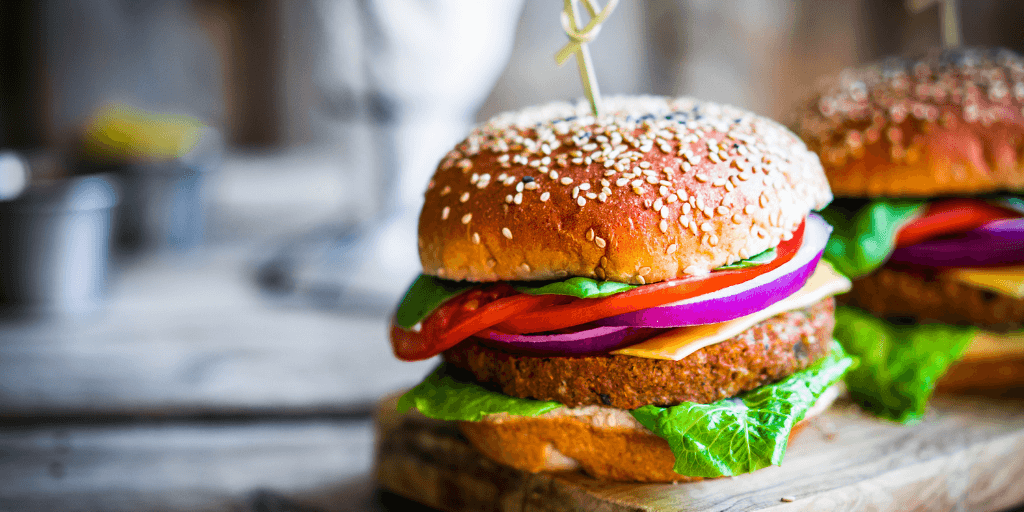
According to Kerry, an authentic flavor is something charred, smokey, or umami, with subtle notes of saltiness and pepper. Texture is just as important as taste. According to Kerry’s survey, U.S. consumers are more likely to buy a plant-based burger that is juicy and succulent, with a crust on the outside of it. A great deal of texture has to do with the way a product is cooked. The cooking process has its own sensory experience with aroma and sound. This translates across so many different plant-based meat types, from chicken tenders to sausages. Consumers’ life experiences dictate what the correct sensorial qualities plant-based meat needs to have, and manufacturers have the monumental task of delivering.
“Taste remains the most important factor in many consumers’ meat substitute choices, so this should undoubtedly be the foremost concern for manufacturers,” says Kohnke. “Increasingly there is a demand for options that replicate the full sensory experience of their original alternative, with the smell and texture also central to the perceived quality of the product. The all-round sensation must match the consumer’s expectations in every sense if it is something they are going to consider.”
Unfortunately, plant-based ingredients function differently from animal-based ingredients, meaning there will be an impact on taste, texture, and nutrition. Luckily there are a variety of solutions available to help mask off-flavor notes and improve texture. Ingredients like Kerry’s Tastesense Masking help manufacturers deliver the desired flavor profile, and Tate & Lyle’s Hamulsion Stabilizer Systems help improve mouthfeel, texture, and enrich protein content.
“The versatile [Hamulsion] range can act as a thickening or gelling agent, emulsifying component, or protein powder across a host of different formulations: in sausages, burgers, or snacks,” says Kohnke.
For its part, Impossible Foods has developed plant-based sausages, chicken nuggets, burgers, and pork. Each has its own important qualities consumers expect.
”Like ground meat from pigs, Impossible Pork is characterized by its savory neutrality, imparting depth and umami richness without being gamey or overpowering. It has a similarly delicious fatty mouthfeel to animal pork, and its lighter color mirrors that of ground meat from pigs, which is often referred to as ‘the other white meat’ in comparison to ‘true’ red meat from cows,” explains Kilman. “By contrast, Impossible Beef is very flavor-forward and bold. A key difference is it contains more of Impossible’s key ingredient heme, an iron-containing molecule found in both plants and animals. The higher heme content, when combined with simple nutrients like amino acids, fatty acids, and sugars, gives Impossible Beef its more pronounced flavor and vivid color—like that of ground beef from cows. It also has a firmer texture than our pork product, as animal pork is traditionally more tender than animal beef.”
When it comes to cooking these products, understanding the chemical reaction that takes place on the grill, skillet, or oven is another important aspect of product development, says Kilman. “Our products can…be prepared just as you would animal meat—pan-fried, baked, sauced, braised, grilled, you name it. We were able to achieve this by closely analyzing animal meat down to the molecular level to understand how we can replicate the same chemical reactions that occur when cooking, but by using plant ingredients,” she explains. “Through our rigorous culinary testing during the product development process, we did find that Impossible meat tends to cook faster than animal meat. However, not only is this a time-saver for home cooks, but it also helps to retain liquid during cooking so there is less mess and more meat to serve your family.”
From the “Sea”
Some of the greatest potential in the plant-based meat category is in plant-based seafood. Just like consumers are concerned about animal welfare and the environmental impact of animal agriculture, so too are they concerned about overfishing and the exposure to potential pollutants such as mercury and microplastics. However, fish and crustaceans pose their own challenges when it comes to formulating plant-based products. Therefore, achieving a successful product in this space can be exceptionally rewarding.

“The overwhelming trend in the plant-based seafood space is dramatic growth. The plant-based seafood sector is expected to grow to $1.3 billion in the next 10 years,” says Chad Sarno, co-founder and chief culinary officer for Good Catch, which is a subsidiary of Gathered Foods (Austin, TX). “We consume around 300 species of animals from the ocean, compared to around 30 from land, so we anticipate that more product formats will come to market. The impact opportunity to disrupt the seafood category is enormous and provides endless possibilities for innovation.”
Like with other plant-based meat alternatives coming to market, a huge component is clean-label positioning. “All Good Catch products are vegan and free of GMOs, mercury, and heavy metals, and are safe and enjoyable for those with shellfish allergies,” says Sarno.
“We tackle the challenges in R&D from the very start, sticking close to our core tenets of soy-free, gluten-free, and non-GMO, with a focus on simple flavor and ingredients,” adds Stephanie Laham, food scientist for Sophie’s Kitchen (Sebastopol, CA). “We’ve found creative ways to make authentic food that tastes great without using the crutches of soy and gluten, something our competitors have found elusive.”
One of the biggest challenges of manufacturing plant-based fish is replicating the flakiness inherent to many types of fish and fish preparations such as patties or cakes. “One of our biggest challenges was getting the delicate flaky texture of seafood correct. Cooked fish, especially tuna, has a distinct thin layering of protein. The team was laser-focused for 18 months to get this right,” says Sarno. “Good Catch products are created with our proprietary six-legume blend of peas, chickpeas, lentils, soy, fava beans, and navy beans. This provides comparable protein and a texture that resembles the flakiness of seafood with spices and herbs to amplify the flavor.”
Companies like Good Catch and Sophie’s Kitchen go a different route than plant-based beef. While Impossible Foods sells burger patties that mimic raw meat which is then cooked, these plant-based fish brands create specific fish dishes such as crab cakes, breaded shrimp, salmon burgers, and breaded fish fillets. This allows them to season their products with the ideal blend of spices that delivers the desired flavor profile. This is not too different from actual fish in the sense that while they do have their particular flavors, seasoning is typically crucial for a flavorful and satisfying culinary experience with seafood.
Of course, part of the culinary experience is the ability to cook a product and be creative with recipes. Animal-based fish products are often a blank canvas for cooks, but that doesn’t mean that plant-based fish can’t be used to deliver a quality meal.
“Cooking with our products is a rewarding and engaging experience whether you’re making a meal for one or sharing with friends and family,” says Laham. “Both prepping and cooking with Sophie’s Kitchen plant-based seafood offers a great alternative for a variety of delicious meals. Of course, they taste great on their own, but the products are simple enough to use in your go-to everyday recipes as well.”
Because Sarno is a chef, Good Catch really strives for its products to be engaging to cook with, and offers a great deal of resources to customers. “Our plant-based seafood is an easy swap for high-quality seafood, and we keep the seafood that we’re swapping out in mind while developing our products and recipes,” Sarno explains. “We have a recipes page on our website and recipe video inspiration on our YouTube channel that offer easy and delicious ways to include Good Catch products in daily meals. Our products are perfect for quick weeknight meals as well as more culinary-driven recipes. We encourage our consumers to be creative in the kitchen. With consumer interest in plant-based offerings at an all-time high, we’re excited to bring creative culinary experiences to all diners and home cooks, no matter their dietary preference.”
Engaging with customers and helping them make the most of their plant-based meat products is an important way to push the category forward and help make it an everyday staple in people’s kitchens.
Getting Cheesy
People love their meat, but when it comes to cheese, people can be downright passionate. The sheer variety and versatility of cheese make it a potent challenge for plant-based food manufacturers to replicate. Immense progress has been made, and the options are pretty robust now, but are enough people willing to make the switch?
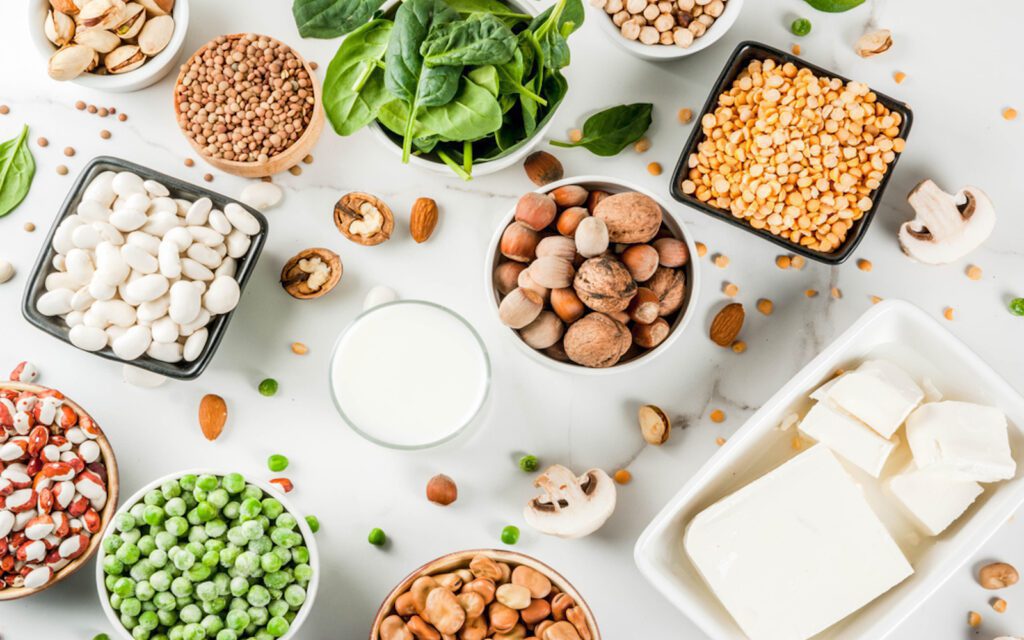
“Plant-based cheese is perceived as being more unique, environmentally friendly, and premium than dairy cheese, but consumers are skeptical that a plant-based cheese alternative can stack up to the taste and texture they love in dairy cheese,” says Takoua Debeche, chief research and innovation officer at Danone North America (White Plains, NY), which is the parent company of plant-based food brands So Delicious and Follow Your Heart. Citing 2019 figures from Numerator, Debeche explains, “We know that approximately one quarter (22%) of prospective dairy-free cheese buyers assume dairy-free cheese would not taste good, so we worked hard to deliver the most delicious taste and texture experience possible by selecting and combining the best quality and sustainable plant-based ingredients.”
Across these two brands, Danone is delivering shreds, slices, spreads, and specialty alternatives to feta cheese and grated parmesan. Danone’s wealth of experience with dairy has helped with research and development of these products. “We use different ingredients to achieve the optimal qualities of plant-based cheese. A commonality across all So Delicious Dairy-Free Cheese Alternatives and many of our Follow Your Heart Dairy-Free Cheese offerings is a blend of filtered water, coconut oil, and modified starches (such as potato, corn, or tapioca, depending on the flavor) to support the base cheese-alternative product,” explains Debeche. “We select and combine top-quality plant-based ingredients that allow them to deliver the most delicious taste and texture experience they can. We’re still working through how to rival the high-fat, low-protein nutritional components of traditional dairy cheese, without sacrificing stretchability and melt—and view this as a long-term goal for our offerings.”
Tate & Lyle, through its Hamulsion Stabilizer System, saw a need to help manufacturers develop plant-based cheese products with less saturated fat. “Plant-based cheese alternatives often use coconut fat to replicate the sensory attributes of saturated fats found in their dairy counterparts. Coconut fat is a saturated fat and therefore delivers a less-favorable nutritional profile,” explains Thoralf Markow, technical service scientist, dairy, at Tate & Lyle. “Our objective was to create texturizing and stabilizing solutions easy to implement in the manufacturer’s process while delivering desired cheese texture attributes, securing consistent quality throughout shelf life, and limiting the use of saturated fats. We also paid particular attention to the list of ingredients, with the objective to shorten the declaration as much as possible. This resulted in a range of cleaner-label solutions supporting the formulation of plant-based hard cheese and semi-hard cheeses such as shredded mozzarella, gouda, cheddar, or feta-style alternatives.”
More than taste and texture, the versatility of cheese as a topping that melts and completely changes its texture when exposed to heat is crucial for that consumer experience. How else can someone make nachos or mac ’n cheese, or even just throw a slice on their favorite plant-based burger?
“A lot of progress has been made to rival the way dairy-based cheese melts with plant-based cheese alternatives! By combining the right blend of oils, starches, and proteins, we have created plant-based cheeses that melt on a pizza in your home oven, or on a grilled cheese sandwich, and even on tacos,” says Debeche. “There is certainly still a clear opportunity to further unlock growth and penetration in plant-based cheese with continued innovation.”
The fact that a dairy company is devoting time and energy to plant-based cheese is a profound testament to the demand and growth potential of plant-based cheese and other dairy alternatives. “At Danone North America, we don’t think that dairy and dairy alternatives need to compete with each other; rather, we want to reach consumers wherever they are, whether it be with plant-based or dairy offerings,” Debeche explains.
What About Nutrition?
Flavor and texture may win over the consumer, but that only goes so far, because when it comes to switching from meat and dairy, plant-based products need to deliver the goods nutritionally as well. The most typical nutritional component we see in plant-based meat is protein, which is paramount for those who are removing meat from their diets.
“The health considerations in the meat alternative space are often focused on the overall nutritional value of food. Consumers are becoming more conscious about the functional ingredients that are in their product choices, including what’s taken out. For manufacturers, using the right mix of ingredients to fortify products not only caters to consumer demand for better nutrition; it can also improve their NutriScore ratings,” explains Kohnke. “Protein remains a key consideration for consumers, with a growing focus on the type and quality of the protein used. Using proteins from a combination of plant-based sources—such as combining grains and pulses—can enhance the nutritional profile of a product and enable it to have certain nutritional claims, as well as helping to maintain texture for a satisfying overall experience.”
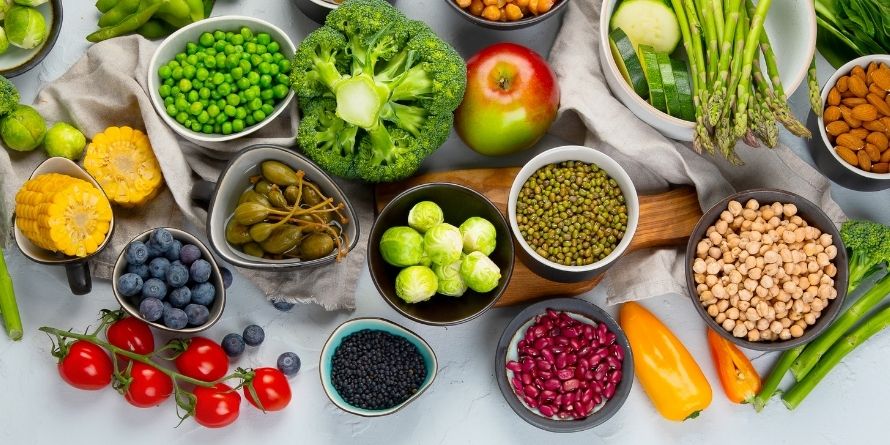
Of course, protein is just one nutritional component you should seek to incorporate into your plant-based meat and dairy alternatives. “With all Impossible products, we aim to match or exceed the nutritional positives of meat from animals, reduce or eliminate nutritional negatives, and add new nutritional value whenever possible,” says Kilman. “For example, in comparison to 80/20 ground beef from cows, Impossible Beef offers the same amount of protein, 1.5 times the iron, eight times the calcium, and is a good source of fiber and contains 40% less total fat.”
While replicating taste and texture is important, when it comes to nutrition there is an opportunity to make even healthier products because there is inherently less fat, cholesterol, and contaminants in plant-based alternatives. On top of this, you can fortify the product nutritionally—but be careful not to impact taste and texture when you do.
Products like fish offer unique attributes such as omega-3s which may be more of a challenge to deal with. But existing brands are making headway in this area as well. “Our nutritional goals are the same as, if not greater than, animal-based counterparts in key areas like protein and omega-rich oils,” says Lesley Werbin, food scientist at Sophie’s Kitchen. “We want our customers to get the same positive nutritional benefits as animal-based foods but without the negative consequences.”
Good Catch’s propriety blend of six legumes delivers on the protein, but the brand continues to work on offering even more nutritional value. “Good Catch plant-based seafood is packed with protein and has the nutritional benefits of seafood—minus the pollution, overfishing, bycatch, mercury, and other toxins that may come with consuming fish,” says Sarno. “We are always seeking ways to improve our plant-based seafood, including exploring ways to introduce more omega-3s into our products.”
The Future of Meat
Recent innovations in the plant-based meat and dairy space have really allowed manufacturers to deliver high-quality meat and cheese analogues to consumers, but science is always pushing the envelope of what’s possible. One of the latest innovations in the animal-free meat and dairy space is cultivated, or cultured, meat and dairy. There are startups currently developing this technology to deliver lab-grown beef, chicken, fish, and dairy. This involves taking cells from animals and growing tissue in a controlled environment that mimics the biological environment of an animal’s body. It should be noted that this does not involve genetic modification.
“Cells are provided water and feed to grow. The nutrient-rich liquid feed (‘growth media’) contains energy (sugars, fats), vitamins and minerals, protein building blocks (amino acids), [and] growth stimuli (growth factor proteins),” explains Didier Toubia, co-founder and CEO of Aleph Farms (Rehovot, Israel), which creates cultivated beef products. “In combination, these growth media components reproduce the same cell environment as inside the animal’s body and enable the cells to multiply and mature inside the cultivator.”

To create a three-dimensional structure from the cultured medium, Aleph Farms and Wanda Fish Technologies (Nes-Ziona, Israel), which makes a cultured fish, use a plant-based scaffolding onto which the tissue can grow. Another way to create a structure for the tissue is 3D bio-printing, which brands like Aleph Farms and MeaTech (Rehovat, Israel) are developing. This technology will also help speed up production.
“We believe 3D bio-printing is the best technological option for recreating the complex tissue patterns characteristic in steak. MeaTech is investing significant money and time in developing systems capable of recreating complex structural protein to ultimately offer consumers the possibility of purchasing cultivated steak, chicken breast, and pork products that mimic what they might find in a butcher shop today,” explains Simon Fried, senior business development, strategy, and marketing executive at MeaTech, which is currently developing cultivated chicken. “Our unique bio-printing technology, developed in house, allows us to print everything directly from a digital file. From a manufacturing standpoint, we believe this is a more efficient approach than, for example, printing cells into a pre-made template structure. When the process is scaled for mass global production, manufacturers will presumably want to produce numerous—possibly hundreds—of different structures. Using pre-fab templates will likely be slower and more expensive than our digital approach.”
Plant-based dairy is a little bit different. For example, Imagindairy uses precision fermentation to “‘teach’ microorganisms how to produce dairy proteins,” says Eyal Afergan, co-founder and CEO of Imagindairy (Tel Aviv, Israel). “This process is similar to the way beer is brewed except we produce protein, which we can then purify and turn into a powder in a completely animal-free process.”
This protein can then be used to create a variety of dairy products, just without the need for animal agriculture. “The proteins that we produce are animal-free proteins [that] are identical in terms of structure, taste, smell, and function to their bovine counterparts,” explains Afergan. “Since proteins are responsible for the functionality and sensory properties of milk and dairy, the proteins we develop can be used to produce a variety of dairy products, including milk, cheese, yogurt, ice cream, and more.”
While the potential of these products is huge, there remain huge hurdles to the commercialization of cultured meat and dairy. “The biggest hurdles for commercialization are cost, scaling up production, and regulatory approvals,” says Fried. “Cell-based manufacturing is still prohibitively expensive and will take time before it reaches its full potential. What will be important is increasing output and reducing production costs to reach price parity with conventional meats. Equally important is regulatory approval of cultivated products so they can be sold in grocery stores. To that end, we are working closely with various regulatory bodies to ensure our proprietary technology will have the necessary approvals.”
“The main hurdles current to commercialization are the lack of a relevant fish cell source, limited scientific knowledge, and the costs of scale-up production necessary to produce the massive number of fish cells to make the product,” adds Malkiel Cohen, PhD, R&D director of Wanda Fish Technologies. “To overcome this, our company is developing our resources, scientific knowledge, materials, and technologies ourselves and contracting with other significant enablers and players in this industry.”
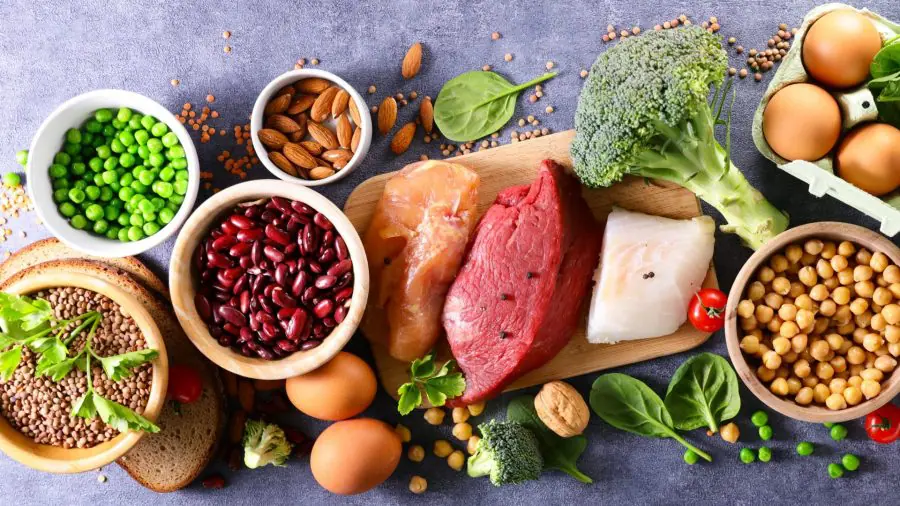
Companies are at various stages of ramping up to commercial production. For example, Aleph Farms recently moved into a 65,000-sq-ft facility to increase its operations sixfold. The move allowed the company to launch a pilot production facility and build an R&D center. “As we transition to our pilot production facility—one that will house some of the world’s most advanced technologies in cellular agriculture—it will not only better serve our efforts to gain regulatory approval for our first, thin-cut beef steak, but also help optimize processes for our larger-scale production facilities which are set to be built during 2022-2024,” says Toubia. “We are looking forward to our pilot facility being fully operational by summer this year, ahead of our initial market launch by 2023 in the Middle East and Asia, pending regulatory approvals for our cultivated beef steak.”
MeaTech is also in the process of optimizing its cultivated meat production technology to increase production and reduce cost and plans to open a cultured avian pilot plant and R&D facility in Belgium by 2023. In the meantime, the brand is taking an innovative approach of coming to market through a strategic partnership between its subsidiary Peace of Meat and Enough, a mycoprotein manufacturer, to develop hybrid products that incorporate both plant protein and cultured animal products.
“Adding cultivated fat ingredients to plant-based meat alternatives enhances their aroma, texture, flavor, as well as mouthfeel, and is a critical step in gaining acceptance for cultivated food products among consumers and food manufacturers,” explains Fried. “We’re expediting our market entry by leveraging Peace of Meat’s cultivated fat technologies. It’s also a great way to introduce the world to cultivated meat products. We believe the market for cultured meat will grow as consumers become accustomed to purchasing products that use cultivated fats in plant-based offerings.”
So, as cultured animal products continue to advance, it’s foreseeable that partnerships between cultured meat and plant-based food manufacturers will help drive product development and consumer recognition. It will also help make these products even better. However, where there is major scientific advancement there is also skepticism and misconceptions, so one must weigh the cost and benefits of consumer perception. Education is key.
“The question is not necessarily about misconceptions as much as it is about fear. The idea of ‘making’ a steak rather than ‘growing an animal’ is a wholly new concept for consumers. For the average person, the idea of food being created in a lab raises questions about whether it’s healthy or even safe,” says Fried. “As consumers, it is always important to raise questions about the source and contents of the food we eat. Most consumers are unaware of what goes on in slaughterhouses and meat-processing plants. Cultured meat is produced in a sterile environment with minimal human contact and no animals. This significantly minimizes the risk of foodborne pathogens, such as E. Coli and salmonella, which are commonly transmitted by factory-farmed animals.”
“Cultivated fish products will be made in highly controlled and hygienic facilities that will ensure the clean production of fish fillets without the usage of antibiotics,” adds Cohen. “Since they will not be exposed to contaminants from the oceans, the cultivated fish products will be free of harmful pathogens and pollutants.”
The benefits of food safety and the big picture of significantly reducing our reliance on animal agriculture or ecosystems, which has positive impacts on animal welfare and the environment, are what will ultimately give consumers the push toward accepting this new class of meat products. That—and taste, of course.
That said, consumers are certainly curious and largely willing to give cultured meat and dairy a try. “A segmentation study we recently commissioned in the UK and U.S., published in peer-reviewed journal Foods, showed that 8 in 10 people would consider cell-cultured meats when available. Additionally, it showed consumers would be alright with cultivated meat making up to 40% of their total meat intake,” says Toubia. However, engaging with consumers is also an important part of securing the future of cultured meat and dairy products. “Building trust with consumers is paramount and central to our strategy. From our Community Center to extensive market surveys worldwide, we listen to consumers and provide transparency into our business practices and production methodology. We’re constantly gaining new insights on our target demographics through research.”







